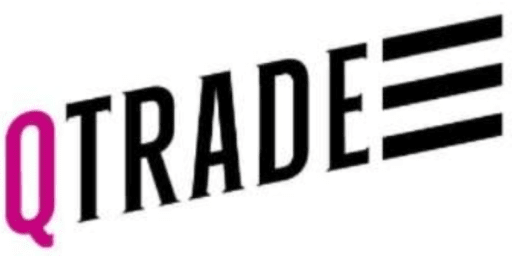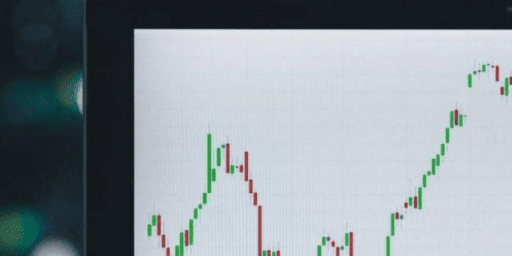RRSP vs RRIF: Conversion, Ages, Penalties, Withdrawal Minimums
One of the main decisions that every Canadian retiree has to make is in regards to at what age they want to convert their RRSP to a RRIF. Consequently, questions such as:
- What is the maximum age to convert my RRSP to a RRIF?
- Is there a penalty for not converting my RRSP to a RRIF before 71?
- Do I pay tax when I rollover my RRSP to RRIF?
Are some of the most common ones that we get in regards to retirement planning.
Ultimately the RRSP vs RRIF debate comes down to the age of you and your partner, and what sort of tradeoffs you want to make regarding withdrawing your retirement income. Use the table of contents below to jump to specific answers to questions such as what is best to convert an RRSP to a RRIF?
What is a RRIF? How is it different from an RRSP?
The Registered Retirement Income Fund (RRIF) is the fully mature version of your Registered Retirement Savings Plan. You see, when your RRSP is all grown up, and you’re ready to be done contributing to it, it transforms into a RRIF and allows you to withdraw money in a tax efficient manner.
Similar to the RRSP, it is key to understand that the RRIF is NOT an investment in and of itself. Instead, it is a tax-sheltered account that you would put investments such as GICs, stocks, bonds, and ETFs into. After you convert your RRSP to a RRIF you can still manage the investments within it in the same DIY style that you did for your RRSP. All of Canada’s best online brokers allow you to easily convert your RRSP to a RRIF.
Here’s a quick look at the attributes of RRIF accounts and how they differ from an RRSP.
- You cannot make new contributions to your RRIF.
- RRIFs have a minimum withdrawal amount for each age that is dictated by the government. More on that later.
- You can modify those minimum withdrawal age amounts by basing them on your spouse’s age.
- You don’t have to make a RRIF withdrawal during the first year your RRIF account is opened. You have until the end of the second year to make your first minimum withdrawal. (So you could be 72 before actually taking money out.)
- RRIF withdrawals are eligible for the pension income tax credit, which generates a tax credit on your first $2,000 withdrawn every year (after you turn 65).
- RRIF withdrawals are eligible for income splitting with your spouse – make sure you don’t pay more tax than you need to.
- At age 71 the government will force you to convert your RRSP to a RRIF, but it can be done as early as age 55.
- If RRIF withdrawals force you to take more than you want to, you can always use the money to invest in your TFSA.
- There is no maximum RRIF withdrawal amount – only a higher tax rate as your taxable income increases each year.
- If you name your spouse as the first beneficiary of your RRIF, all assets can be transferred tax- and probate-free to them.
- Like RRSP withdrawals, all RRIF withdrawals are subject to income tax.
- You can transfer a RRIF from one bank or brokerage to another.
- You can have multiple RRIF accounts, but it makes the logistics of withdrawals a bit more difficult. Most people usually collapse their RRSP accounts together before converting to a RRIF.
What Age Should I Convert an RRSP to a RRIF?
There is no great rule of thumb or calculator that I’m aware of that will tell you at what age to convert your RRSP to a RRIF.
Canadian fee-only planner Jason Heath perhaps put it best when he wrote: There is no ideal RRSP/RRIF withdrawal plan, just factors to consider to try to best fund your retirement.
Here are a few key things to remember when it comes to deciding what age to convert your RRSP to a RRIF.
1) You will be forced to convert at 71.
2) The earliest possible age you can convert is 55.
3) Converting at least part (you don’t have to convert the whole RRSP to a RRIF) of your RRSP at age 65 is often a good idea – especially if you don’t have a private workplace pension – because it qualifies you for the $2,000 pension income tax credit.
4) A lot of people choose to delay withdrawing their RRSP as long as possible with the idea that they want to maximize their investments’ time to grow tax-free. This is a good instinct, but it must be weighted against the fact that if you’re forced to withdraw more than you anticipated at age 71 (and going forward) then you could end up in a much higher tax bracket than you anticipated. This trade off is especially painful for people in low risk portfolios with a lot of fixed income.
5) What is your strategy for collecting OAS and CPP? If your strategy is to wait in order to take advantage of getting the maximum guaranteed benefit, then converting to a RRIF earlier rather than later makes a lot of sense. Staying under the OAS clawback tax becomes a major consideration.
6) How healthy are you and your spouse? If you have unfortunate reasons to believe that you may go to the great tax haven in the sky sooner rather than later, it may make sense to begin withdrawing your RRSP or RRIF income sooner rather than later.
If both you and your spouse pass away, your RRSP or RRIF will be taxed in the hands of your beneficiaries. This often results in a marginal tax rate higher than 50%. Obviously, taking more money out of the RRSP or RRIF before that happens would mean a lower taxation bite for people with taxable incomes below $150,000 or so.
How to Convert a RRSP to a RRIF
Converting your RRSP to a RRIF is a pretty standard process at most banks or brokerages. They will likely even prompt you to make the conversion the year you turn 71.
Basically, there is a RRIF application that your bank or brokerage will ask you to fill out that will ask you a few decisions in regards to beneficiaries, withdrawal amounts, etc. You’ll then have to choose a withdrawal schedule, as you can choose to get money monthly, quarterly, semi-annually, or annually.
How Much Do I Have to Withdraw From My RRIF Each Year?
The government resets the RRIF minimum withdrawal amounts each year. You can see the current RRIF minimums in the chart below.
Age | RRIF Factors | Age | RRIF Factors | Age | RRIF Factors |
55 | 2.86% | 70 | 5.00% | 85 | 8.51% |
56 | 2.94% | 71 | 5.28% | 86 | 8.99% |
57 | 3.03% | 72 | 5.40% | 87 | 9.55% |
58 | 3.13% | 73 | 5.53% | 88 | 10.21% |
59 | 3.23% | 74 | 5.67% | 89 | 10.99% |
60 | 3.33% | 75 | 5.82% | 90 | 11.92% |
61 | 3.45% | 76 | 5.98% | 91 | 13.06% |
62 | 3.57% | 77 | 6.17% | 92 | 14.49% |
63 | 3.70% | 78 | 6.36% | 93 | 16.34% |
64 | 3.85% | 79 | 6.58% | 94 | 18.79% |
65 | 4.00% | 80 | 6.82% | 95 and above | 20.00% |
66 | 4.17% | 81 | 7.08% | ||
67 | 4.35% | 82 | 7.38% | ||
68 | 4.55% | 83 | 7.71% | ||
69 | 4.76% | 84 | 8.08% |
How are RRSP vs RRIF Withdrawals Taxed?
Your RRIF withdrawals will be taxed in the same way as if you earned money at a job. Yes, your investments do get to compound tax-free when they are in the RRIF (just like inside an RRSP), but when they come out they will be fully taxable income, and they will affect your OAS clawback as well.
There are no tax implications for converting an RRSP to a RRIF, or from moving a RRIF from one institution to another.
Where most people start to get confused when it comes to RRIF withdrawal taxes is when withholding tax rates get discussed.
There are two important things to keep in mind: First, withholding tax rates are NOT the final tax rate that you will pay. And secondly, you will NOT pay withholding tax on your minimum RRIF withdrawal – but it will be counted as taxable income.
So if you choose to take more money out of your RRIF than the minimum, then it’s kind of like when you earned a paycheque during your working years.
Your employer most likely held back a certain amount of your pay, and sent it to the government on your behalf in order to pay your income taxes throughout the year, right? Then you filed your taxes and you either got a little money back (meaning the employer took a little more than they had to) or you owed a little (the employer didn’t take enough, or you had some other income that wasn’t taxed at the source).
Similarly, when it comes to RRIF withholding tax rates, the government directs your brokerage or bank to hold some of that money for income tax purposes. That said, when you “settle up” via your tax return, you might get some of that money back (if you’re in a lower tax bracket) or have to pay a bit more (if you ended up having substantial income from a variety of sources).
So – there are two tax rates most RRIF beneficiaries want to know:
1) What is my RRIF withholding tax rate?
2) What is the actual overall amount that I will be taxed after all is said and done, and I’ve filed my taxes for the year.
Here’s a look at how the RRIF withholding tax rate will apply to you.
| Amount Withdrawn Above the RRIF Minimum | RRIF Withdrawal Withholding Tax Rate (%) |
| Up to $5,000 | 10% |
| $5,0001 to $15,000 | 20% |
| $15,000+ | 30% |
| If you only withdraw the RRIF minimum | 0% |
The answer to the second question is simply: You will pay taxes the same way that you would if you earned the money at a job. RRIF withdrawals are fully taxable – just like if you withdrew money from an RRSP at any time.
So it’s quite possible that if you have a substantial personal pension, non-registered investments, or income from other sources, that you will eventually have to pay taxes on the RRIF withdrawal – even if it was a minimum withdrawal and there were no withholding taxes taken up front.
Example: If Jane begins her RRIF withdrawals at age 65, and has $100,000 in her RRIF, then she will be required to take out $4,000 that year. If Jane decides she actually wants to take out $6,000, then her brokerage would withhold $200 ($2,000 x 10%), and she would get $1,800 sent to her chequing account, plus her $4,000 minimum withdrawal that wouldn’t have any withholding applied to it.
Let’s say that Jane is a retired nurse and had a substantial personal pension of around $35,000. This would mean that Jane needs to pay roughly a 20% tax rate on her $6,000 RRIF withdrawal (depending on her combined federal and provincial tax rate). When she files her income tax, her tax slip from her brokerage will tell the government Jane already paid $200 in withholding tax when she took out that “extra” $2,000 above the RRIF minimum.
The CRA will then ask Jane for the rest of her taxes – roughly $1,000 ($6,000 x .20 = $1,200 – $200 = $1,000) before tax credits and the rest of her tax situation is taken into consideration. Now Jane will automatically be eligible for the pension income tax credit, so she’ll get $300 in tax savings there, but we don’t know what the rest of her tax situation looks like. (Perhaps Jane has a spouse that she can income split with?) What we do know is that her $6,000 RRIF withdrawal will be treated as taxable income – again, just as if she earned the money at a job.
What Happens to My RRIF When I Die?
The two scenarios most common to a person who passes away with a RRIF are:
1) You are survived by a spouse.
2) You are not survived by a spouse.
In the first instance, as long as you have named your spouse as your beneficiary, your RRIF will “roll over” tax-free to your spouse or partner. Your RRIF withdrawal schedule will now apply to your spouse, and the payments will continue. This also cuts down on probate costs, so most partners generally opt to name each other as their beneficiaries.
If you pass away without a spouse to roll over your RRIF to, then it’s going to be taxes as income when your estate is wrapped up. There are a couple of small exceptions to the rule if you are the guardian of a dependent grandchild under the age of 18, or a dependent grandchild that is mentally or physically infirm of any age. Barring those exceptions, whatever is left in your RRIF is going to get taxed as if you earned the money at a job that year.
This often means paying a very high tax rate if someone passes away with more than $100,000 in their RRIF – or RRSP for that matter. Consequently, it makes it even more attractive to begin withdrawing at least some assets earlier in the ball game.
RRSP vs RRIF vs Annuity in Canada
At whatever age you decide that you are done contributing and want to convert your RRSP to a RRIF, you actually have one more decision to make: RRIF vs Annuity.
I definitely recommend checking out my article on Investing in Annuities in Canada for more information. I really believe most Canadians would sleep much better at night by using at least some of their savings to “buy a pension for a life”.
With an annuity that is purchased entirely with funds from your RRSP account, you would be taxed on the distributions as if you earned the money at a job – just as you are with RRIFs. If you go the annuity route you will sacrifice some flexibility when it comes to handling your own investments AND there is a tradeoff in that you might be sacrificing some change of an inheritance to pass on as annuities wouldn’t continue paying out after the annuitants pass away.
BUT – in exchange for those trade offs you get a hands-off worry-free pension for life, and you get the ultimate in longevity protection as your RRIF could run out of money before you run out of time, but an annuity will pay out until death. (And in the case of a joint annuity, it will pay out until the second spouse were to pass away as well.)
The good news is that this RRIF vs Annuity debate isn’t an all-or-nothing proposition. You can choose to annuitize just a portion of your RRSP and convert the rest into a RRIF. A RRIF can also be converted to an annuity at any point in time (although the reverse is not true, as an annuity is locked in and can’t be reversed).
RRIF vs RRSP FAQ
I've Completed My Million Dollar Journey. Let Me Guide You Through Yours!
Sign up below to get a copy of our free eBook: Can I Retire Yet?











when making rrif withdrawals can a combiation of cash and stock transfers?
Hi Kyle,
Great article as always. Thank you. We are retired. We plan to deplete our RRSPs between ages 60 and 65. Im questioning the need for a RRIF…
Annual withdrawals will be far more than minimum RRIF requirements. We are too young to qualify for the pension credit. Besides the potential RRSP deregistration fees, do you see any reason not to simply withdraw from our RRSPs? Am I missing anything?
Thanks in advance
Nope, I see no reason to worry about going with a RRIF until you can take advantage of the pension credit (and even then you could do a partial conversion).